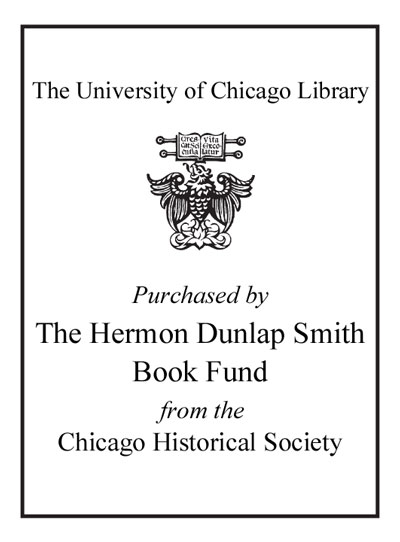|
|
|
|
| LEADER |
00000cam a2200000 i 4500 |
| 001 |
12456879 |
| 005 |
20201215080021.9 |
| 008 |
200201s2020 inuab b 001 0 eng d |
| 003 |
ICU |
| 040 |
|
|
|a YDX
|b eng
|e rda
|c YDX
|d BDX
|d OCLCQ
|d TOL
|d OCLCO
|d GZN
|d OCLCO
|d YDXIT
|
| 019 |
|
|
|a 1137814388
|
| 020 |
|
|
|a 9780268108182
|q paperback
|
| 020 |
|
|
|a 0268108188
|q paperback
|
| 020 |
|
|
|a 9780268108175
|q hardcover
|
| 020 |
|
|
|a 026810817X
|q hardcover
|
| 035 |
|
|
|a (OCoLC)1137855815
|z (OCoLC)1137814388
|
| 043 |
|
|
|a n------
|
| 050 |
|
4 |
|a E78.G7
|b E39 2020
|
| 082 |
0 |
4 |
|a 977.004/973
|2 23
|
| 100 |
1 |
|
|a Edwards, Richard W.,
|c IV,
|e author.
|
| 245 |
1 |
0 |
|a Indigenous life around the Great Lakes :
|b war, climate, and culture /
|c Richard W. Edwards IV.
|
| 264 |
|
1 |
|a Notre Dame, Indiana :
|b University of Notre Dame Press,
|c [2020]
|
| 300 |
|
|
|a xvii, 283 pages :
|b illustrations, maps ;
|c 23 cm.
|
| 336 |
|
|
|a text
|b txt
|2 rdacontent
|0 http://id.loc.gov/vocabulary/contentTypes/txt
|
| 337 |
|
|
|a unmediated
|b n
|2 rdamedia
|0 http://id.loc.gov/vocabulary/mediaTypes/n
|
| 338 |
|
|
|a volume
|b nc
|2 rdacarrier
|0 http://id.loc.gov/vocabulary/carriers/nc
|
| 490 |
0 |
|
|a Midwest archaeological perspectives
|
| 500 |
|
|
|a "MAC Midwest Archaeological Conference, Inc."
|
| 504 |
|
|
|a Includes bibliographic references (pages 243-279) and index.
|
| 505 |
0 |
|
|a Culture history and archaeological background -- Risk management and other theoretical considerations -- Methods and methodology -- Results of macrobotanical data collection -- Results of isotopic data collection -- Koshkonong diet -- Regional dietary trends -- Understanding the implications of agriculture -- Risk management in Oneota economics -- Assessing the relationship between agriculture and political complexity in the midcontinent
|
| 520 |
|
|
|a "Enormous changes affected the inhabitants of the Eastern Woodlands area during the eleventh through fifteenth centuries AD. At this time many groups across this area (known collectively to archaeologists as Oneota) were aggregating and adopting new forms of material culture and food technology. This same period also witnessed an increase in intergroup violence, as well as a rise in climatic volatility with the onset of the Little Ice Age. In Indigenous Life around the Great Lakes, Richard W. Edwards explores how the inhabitants of the western Great Lakes region responded to the challenges of climate change, social change, and the increasingly violent physical landscape. As a case study, Edwards focuses on a group living in the Koshkonong Locality in what is now southeastern Wisconsin. Edwards contextualizes Koshkonong within the larger Oneota framework and in relation to the other groups living in the western Great Lakes and surrounding regions. Making use of a canine surrogacy approach, which avoids the destruction of human remains, Edwards analyzes the nature of groups' subsistence systems, the role of agriculture, and the risk-management strategies that were developed to face the challenges of their day. Based on this analysis, Edwards proposes how the inhabitants of this region organized themselves and how they interacted with neighboring groups. Edwards ultimately shows how the Oneota groups were far more agricultural than previously thought and also demonstrates how the maize agriculture of these groups was related to the structure of their societies."--publisher description
|
| 650 |
|
0 |
|a Oneota Indians (Great Plains)
|0 http://id.loc.gov/authorities/subjects/sh85094788
|
| 650 |
|
0 |
|a Indians of North America
|z Great Lakes Region (North America)
|x History.
|
| 650 |
|
0 |
|a Indians of North America
|z Great Lakes Region (North America)
|x Social life and customs.
|
| 711 |
2 |
|
|a Midwest Archaeological Conference.
|0 http://id.loc.gov/authorities/names/n81091275
|1 http://viaf.org/viaf/2145858372723052703
|
| 903 |
|
|
|a HeVa
|
| 929 |
|
|
|a cat
|
| 999 |
f |
f |
|i 6ee7c70e-021d-53b5-ba12-563943e8f98f
|s 50367ae2-1921-551b-9e30-876351e5e624
|
| 928 |
|
|
|t Library of Congress classification
|a E78.G7 E39 2020
|l JRL
|c JRL-Gen
|i 12081996
|
| 927 |
|
|
|t Library of Congress classification
|a E78.G7 E39 2020
|l JRL
|c JRL-Gen
|e HESM
|b 116944001
|i 10265114
|

